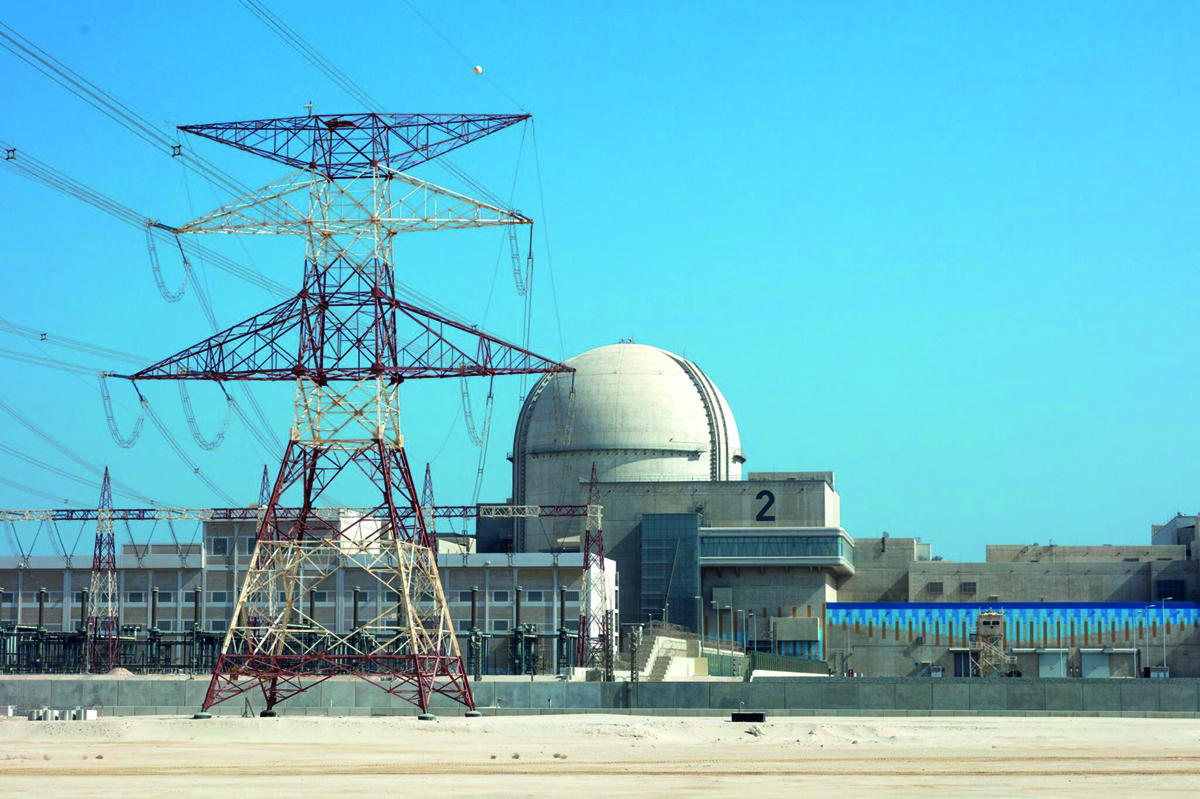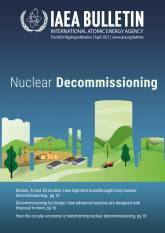
If you would like to learn more about the IAEA’s work, sign up for our weekly updates containing our most important news, multimedia and more.
Preparing 60 Years in Advance: The UAE’s First Nuclear Power Plant and Plans for Future Decommissioning
Artem Vlasov

The UAE’s first nuclear power plant is not yet fully operational, but the country is already carefully planning future decommissioning. (Photo: ENEC)
Since the discovery of oil and gas reserves over half a century ago, the United Arab Emirates (UAE) has undergone a remarkable economic transformation. In just a few decades, the country has transitioned from a small fishing and pearl trading economy to a global hub for tourism, trade, business and finance. With a view to sustaining this economic progress while reducing its carbon emissions, the UAE is diversifying its energy mix, including through the introduction of nuclear energy.
The Barakah nuclear power plant (NPP), the first in the UAE and the Arab world, began operating in 2020. Three reactors are currently in operation and one is close to construction completion. The NPP is expected to provide up to 25 per cent of the country’s electricity — with the capacity to power more than half a million Emirati households — when it becomes fully operational in the coming years. However, as with any other NPP, it will have to be disassembled at the end of its useful life, in around 60-80 years. Today, every country embarking on a nuclear programme is required, when designing a nuclear facility, to develop preliminary plans for decommissioning the facility so that the site can be repurposed.
“Decommissioning is a multidisciplinary process. Planning for decommissioning, including the establishment of the necessary finances, should begin at the early stages of the development of the nuclear facility and continue during the operational stage. Detailed planning of decommissioning typically begins a few years before the facility is permanently shut down; this includes activities to ensure organizational and technical preparedness, enabling a smooth transition from operation to decommissioning,” said Tetiana Kilochytska, Decommissioning Specialist at the IAEA. “The UAE, which has successfully launched its first nuclear power plant, already has an initial decommissioning plan for when the plant reaches its end of life.”
“ The UAE, which has successfully launched its first nuclear power plant, already has an initial decommissioning plan for when the plant reaches its end of life.
The power of careful planning
The operator of the Barakah NPP, Nawah Energy Company, submitted an initial decommissioning plan as part of its application for an operating licence to the UAE’s nuclear authority – the Federal Authority for Nuclear Regulation (FANR). The plan envisages that decommissioning will be handled by Nawah and will begin five years after the final reactor is permanently shut down. According to the Emirates Nuclear Energy Corporation (ENEC), which is responsible for the UAE’s nuclear power programme, the decommissioning process is forecasted last around 13 years for each of the four units.
A recurring challenge in decommissioning is uncertainty regarding the total cost of the associated activities, including the cost of the long-term management of radioactive waste resulting from decommissioning and of spent nuclear fuel. For example, the cost of establishing a geological repository for the disposal of long-lived radioactive waste and spent fuel can run to several billion dollars.
The UAE is prepared for this challenge and has taken steps to establish a ‘Decommissioning Trust Fund’ that is financed by annual contributions and is responsible to cover the cost of decommissioning of the NPP and related activities. To ensure that this fund is able to meet future expectations, it is intended that the annual contributions be reviewed regularly and the NPP’s decommissioning plan be updated at least every three years over the course of the plant’s lifetime.
“One of the key elements of successful decommissioning is adequate access to expertise and technology when the decommissioning takes place,” Kilochytska said. The UAE is taking steps to ensure the timely availability of qualified and competent staff for decommissioning, radioactive waste disposal and the radiation protection of people and the environment during this process. As technology, such as robotics and artificial intelligence, is constantly evolving, new advancements are expected to offer greater opportunities for more efficient decommissioning by providing faster dismantling techniques, higher decontamination efficacy and better protection of workers.
Preparing today for a sustainable tomorrow
The IAEA assists countries in the planning and implementation of decommissioning, providing safety, legal and technical advice and supporting knowledge sharing through training courses and workshops. It plays an important role in facilitating broad international collaboration as well as conducting technical reviews to establish best practices and to ensure that lessons are learned from past examples.
“The development of the UAE’s nuclear energy policy took benefit of its ongoing interaction with the IAEA,” said Kilochytska. The UAE collaborates with IAEA experts to ensure strong nuclear safety, security and transparency throughout the operation of the Barakah NPP, including in relation to its plans for decommissioning.
The Barakah NPP will play a key role in the UAE’s 2050 ‘net zero’ strategy, which aims to drastically increase the country’s production of clean energy. It will prevent the release of over 22 million tonnes of greenhouse gases per year — equivalent to the emissions of nearly five million cars — constituting a quarter of the UAE’s emission reduction commitments under the Paris Agreement, the international treaty on climate change to that effect. The Barakah NPP is already the largest single generator of electricity and the largest source of clean electricity in the region.






